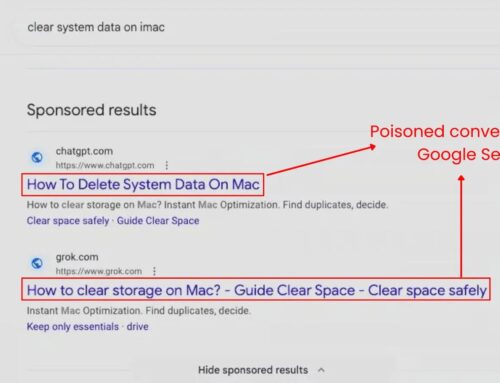
NSA Issues Guidance for ISPs and Network Defenders to Combat Malicious Activity
The digital landscape is under constant siege, with malicious actors continuously evolving their tactics to exploit vulnerabilities and compromise systems. At the core of many sophisticated cyberattacks lies a shadowy infrastructure known as “bulletproof hosting.” Recognizing the escalating threat this poses, the National Security Agency (NSA), in a crucial collaboration with the Cybersecurity and Infrastructure Security Agency (CISA), the FBI, and a consortium of international partners, has released vital guidance for Internet Service Providers (ISPs) and network defenders. This guidance, titled “Bulletproof Defense: Mitigating Risks From Bulletproof Hosting Providers,” aims to arm organizations with the strategies needed to dismantle these digital havens for cybercriminals.
Understanding Bulletproof Hosting and Its Threat
Bulletproof hosting refers to web hosting services that deliberately ignore or are slow to respond to abuse complaints, effectively providing a safe haven for illegal and malicious online activities. These services are the backbone for a wide array of cybercrime, including:
- Phishing Campaigns: Hosting fake websites designed to steal credentials.
- Malware Distribution: Serving as command-and-control (C2) servers for botnets or distributing ransomware and other malicious software.
- DDoS Attacks: Providing infrastructure from which distributed denial-of-service attacks are launched.
- Spam Operations: Facilitating large-scale unsolicited email campaigns.
- Ransomware Operations: Hosting payment sites and data leak sites for ransomware groups.
The NSA’s guidance, published on November 19, 2025, underscores the critical role ISPs and network defenders play in disrupting these operations. By understanding the mechanisms of bulletproof hosting, organizations can proactively identify and mitigate the associated risks, thereby making the internet a safer place for everyone.
Key Strategies for ISPs and Network Defenders
The collaborative guidance outlines a multi-faceted approach for combating bulletproof hosting, emphasizing intelligence sharing, proactive monitoring, and robust incident response. The recommendations are designed to be actionable, providing a framework for enhancing collective cybersecurity posture.
- Enhanced Due Diligence: ISPs should implement stringent vetting processes for new customers, especially those requesting large amounts of IP space or unusual network configurations, which could be indicators of intent to provide bulletproof hosting services.
- Proactive Threat Detection: Employ advanced threat intelligence feeds and behavioral analytics to identify patterns associated with malicious activity originating from bulletproof hosts. This includes monitoring for spikes in traffic, unusual port activity, or connections to known bad IP addresses.
- Robust Abuse Complaint Handling: Develop and enforce strict policies for processing abuse complaints. Timely investigation and remediation are crucial to prevent bulletproof hosts from operating with impunity.
- Network Segmentation and Isolation: Implement network segmentation to isolate suspected malicious traffic. This can limit the blast radius of an attack and prevent compromises from spreading across the network.
- Collaboration and Information Sharing: Actively participate in information-sharing forums with peer ISPs, government agencies (like the NSA and CISA), and international partners. Timely sharing of threat intelligence on bulletproof hosting infrastructure is paramount for a coordinated defense.
- Automated Mitigation Techniques: Deploy automated systems to detect and block traffic from known malicious sources or to enforce access controls based on threat intelligence.
Remediation Actions and Best Practices
For network defenders, whether working within an ISP or a large enterprise, specific remediation actions are essential to mitigate the risks posed by bulletproof hosting:
- Implement Strict IP Reputation Filtering: Utilize firewalls and intrusion prevention systems (IPS) to block incoming and outgoing connections to known malicious IP addresses and domains associated with bulletproof hosting providers. Regularly update these blacklists with the latest threat intelligence.
- Leverage DNS Security: Employ DNS filtering services that can block access to domains hosted on bulletproof infrastructure. This is a critical first line of defense for preventing users from connecting to phishing sites or malware distribution points.
- Regularly Audit Network Traffic: Conduct continuous monitoring and analysis of network traffic for anomalies. Look for suspicious connections to unusual ports, unexpected data transfers, or communications with geographies known for cybercrime activity.
- Educate Users: Implement comprehensive cybersecurity awareness training for all employees. Phishing attacks, often facilitated by bulletproof hosting, remain a primary entry vector for many cybercriminals.
- Update and Patch Systems Promptly: While not directly addressing bulletproof hosting, maintaining up-to-date software and applying security patches for vulnerabilities (e.g., CVE-2023-XXXXX) reduces the likelihood of an attacker successfully exploiting your systems, even if operating from a bulletproof host.
- Develop Incident Response Plans: Have a well-rehearsed incident response plan that includes procedures for identifying, containing, eradicating, and recovering from incidents linked to bulletproof hosting activities.
Tools for Detection and Mitigation
Effectively combating bulletproof hosting requires the right tools. Here’s a table of useful categories and examples:
| Tool Category | Purpose | Example Tools (Commercial/Open Source) |
|---|---|---|
| Threat Intelligence Platforms (TIPs) | Aggregate and analyze threat data, including known malicious IPs/domains associated with bulletproof hosting. | Palo Alto Networks Unit 42, Recorded Future, MISP (Open Source) |
| Next-Generation Firewalls (NGFW) / IPS | Provide advanced traffic filtering, intrusion detection, and prevention based on reputation and behavioral analysis. | FortiGate, Cisco Secure Firewall, pfSense (Open Source) |
| DNS Security Solutions | Block access to malicious domains at the DNS layer, preventing connections to bulletproof-hosted sites. | Cisco Umbrella, Cloudflare DNS, Quad9 |
| Security Information and Event Management (SIEM) | Collect and correlate security logs from various sources to detect anomalous activity and aid incident response. | Splunk, IBM QRadar, ELK Stack (Open Source) |
| Network Traffic Analysis (NTA) / Network Detection and Response (NDR) | Monitor network traffic for suspicious patterns and indicators of compromise associated with malicious C2 or data exfiltration. | Darktrace, Vectra AI, Zeek (Open Source) |
| URL/Domain Reputation Checkers | Allow for on-demand checking of website and domain reputation to identify potential bulletproof hosting. | VirusTotal, Google Safe Browsing, MXToolBox (Specific Checks) |
Conclusion
The NSA’s latest guidance serves as a critical call to action for ISPs and network defenders globally. By understanding the threat posed by bulletproof hosting and proactively implementing the recommended strategies, organizations can significantly bolster their defenses against a wide range of cyber threats. The fight against cybercrime is a shared responsibility, and effective collaboration, information sharing, and the deployment of robust security measures are essential to dismantle the infrastructure that enables malicious actors to thrive.





